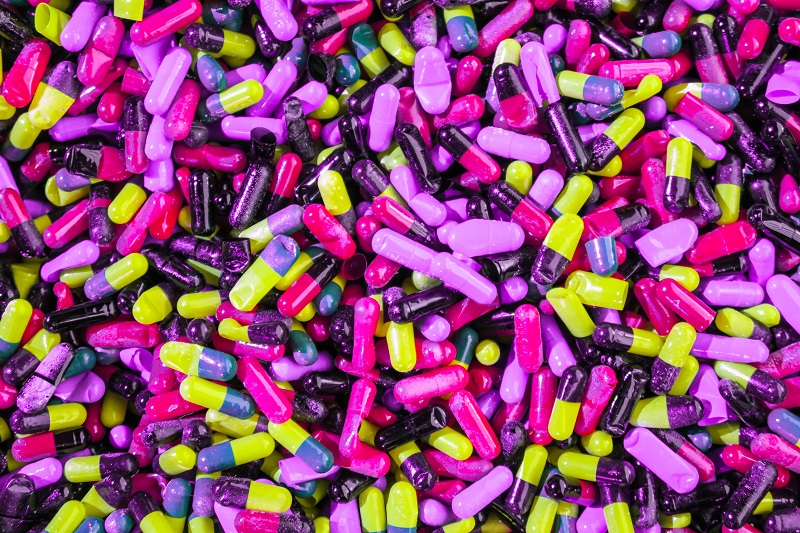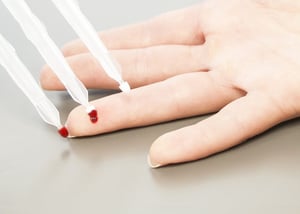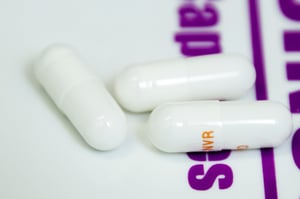Share this
VAMS and AEDs: an exciting new LC-MS/MS method
by Neoteryx Microsampling on Apr 16, 2019 6:09:00 AM

A microsampling pioneer in Italy has developed, validated, and submitted for publication a new LC-MS/MS method for measuring concentrations of a range of antiepileptic drugs (AEDs) using Volumetric Absorptive Microsampling technology.
Dr. Ugo de Grazia and his collaborators at Fondazione IRCCS Instituto Neurologico Carlo Besta Neurological Hospital in Milano have established a useful method for facilitating easier antiepileptic drug monitoring and for dealing with extraction difficulties of small drugs on different physical-chemical properties.
During their work, Dr. de Grazia and his team had to overcome significant challenges around extraction.
“In the very first experiments, recovery and reproducibility were very low or very variable,” says Dr. de Grazia. “Then we had the idea that saved our lives and definitively changed our landscape. We found that by rehydrating blood on well desiccated tips for a few seconds, we achieved the requirements needed for developing a robust and reliable method as requested by international FDA or EMA guidelines on biochemical method development.”
This experimentation was worth it, Dr. de Grazia says, because of the advantages of making VAMS® microsampling technology work in his environment. “In our institution we hospitalize about 6,000 patients a year, of which about 1,300, or 22%, are children. Many of these children, but also adults, are affected by different forms of epilepsy and require therapeutic drug monitoring (TDM)."
Dr. de Grazia explained that when they became aware of this novel device for microsampling, they immediately thought it could be very useful for children because it’s less painful. Moreover, the kind of therapy they provide is long lasting and requires continuous monitoring.
"Our patients come from all over Italy, traveling sometimes long distances, or very frequently, or both. So, we thought that if we have a reliable tool for microsampling, we can try to reduce the patient’s effort in reaching our specialized laboratory to have their TDM, thus improving the patient’s quality of life.”
Dr. de Grazia also highlights the advantages of VAMS® in the context of a clinical laboratory workflow. “In planning our study, we also considered lab benefits, such as reduced costs with regards to dried blood microsampling - e.g., no cold chain or biohazard shipping – along with less need for a phlebotomist if samples are collected at home; no need to undertake processing of blood samples to prepare plasma; and finally, assay compatibility with in-house routine chromatographic techniques.”
Worldwide Collaborations Using VAMS
 Dr. De Grazia is performing his current work in collaboration with Prof. Philip Patsalos and his team at the National Epilepsy Research Centre in the UK, a globally known force in the world of research into therapeutic drug monitoring for antiepileptics.
Dr. De Grazia is performing his current work in collaboration with Prof. Philip Patsalos and his team at the National Epilepsy Research Centre in the UK, a globally known force in the world of research into therapeutic drug monitoring for antiepileptics.
Dr. de Grazia credits Neoteryx with helping to establish and solidify this partnership. “Dr. James Rudge, technical director at Neoteryx, introduced me to Prof. Patsalos, as we share professional interest in microsampling and expertise in TDM of AEDs, and we both are members of International Association of Therapeutic Drug Monitoring and Clinical Toxicology (IATDMCT)."
At the time they were introduced, Dr. de Grazia said that his team had the first results on Mitra sampling applied to AED TDM, which they were going to show at the Neoteryx corporate workshop in the MSACL EU congress in Salsburg (Austria) in 2017.
"Prof. Patsalos was impressed by those results, and we exchanged some mails and calls to start a collaboration about this topic,” said de Grazia.
Inspiring Findings with VAMS
 Aside from demonstrating the possibility of using Mitra devices with VAMS technology to submit biological samples for the therapeutic drug monitoring of antiepileptic drugs, Dr. de Grazia’s research has created some other important discoveries.
Aside from demonstrating the possibility of using Mitra devices with VAMS technology to submit biological samples for the therapeutic drug monitoring of antiepileptic drugs, Dr. de Grazia’s research has created some other important discoveries.
One of the most exciting, says Dr. de Grazia, is an ability “to highlight the different behavior between the drugs that are able to permeate the membrane of red blood cells and accumulate within, like zonisamide, and those that do not, like perampanel."
Dr. de Grazia said that this property was very exciting because it reveals a biological phenomenon and may be useful in future studies on small molecules (e.g., new drugs) to assay if they permeate, or don’t permeate, red blood cells.
"We can change our idea of total concentration of molecule since, until today, we referred to plasmatic concentration - drug bound fraction plus free fraction - not considering the reservoir of a drug within red cells, which may contribute to plasmatic drug equilibrium.”
Useful Recommendations
Based on his challenges involving extraction, Dr. de Grazia makes some specific suggestions for working with the Mitra device and VAMS technology, which are likely to prove useful for other scientists and researchers that follow in his stead.
“Mitra is a powerful and versatile device that opens a new era in microsampling, but you may need some time to learn to handle and become confident with it,” says de Grazia. He outlines some essential first steps:
- Be sure tips are well dried before starting the extraction procedure to avoid carrying too much hemoglobin in samples.
- Rehydrate tips in water before extraction.
“Perhaps these are not universal laws,” Dr. de Grazia says, “but we found them mandatory in our study.”
He suggests that, after taking these preliminary steps, you should consider “if the molecule you are interested in is water soluble or not.”
- If it’s soluble in water, proceed thought the method recovering water used for rehydration - now including the drug - adding a precipitation step to be sure you don’t have any hemoglobin in your sample.
- If it’s not water-soluble, you may consider including one more step of extraction by the mean of a mixture water: organic - methanol, acetonitrile, or what is better suitable for your molecule - and then proceed further by precipitation. Depending on the nature of studied drug, consider testing different combinations of the mixture water: organic solvent.
“A comprehensive tutorial about Mitra sampling and derived analytical methods explaining and discussing all stages of VAMS procedures on different matrices has been recently published,” Dr. de Grazia says in conclusion. “VAMS applications and automation are discussed, too.”

Image credits: iStock, Trajan Scientific and Medical
Share this
- Microsampling (206)
- Research, Remote Research (119)
- Venipuncture Alternative (105)
- Clinical Trials, Clinical Research (83)
- Mitra® Device (73)
- Therapeutic Drug Monitoring, TDM (51)
- Dried Blood Spot, DBS (39)
- Biomonitoring, Health, Wellness (30)
- Infectious Disease, Vaccines, COVID-19 (24)
- Blood Microsampling, Serology (23)
- Omics, Multi-Omics (21)
- Decentralized Clinical Trial (DCT) (20)
- Specimen Collection (18)
- Toxicology, Doping, Drug/Alcohol Monitoring, PEth (17)
- Skin Microsampling, Microbiopsy (14)
- hemaPEN® Device (13)
- Preclinical Research, Animal Studies (12)
- Pharmaceuticals, Drug Development (9)
- Harpera Device (7)
- Industry News, Microsampling News (5)
- Antibodies, MAbs (3)
- Company Press Release, Product Press Release (3)
- Environmental Toxins, Exposures (1)
- July 2025 (1)
- May 2025 (1)
- April 2025 (2)
- December 2024 (2)
- November 2024 (1)
- October 2024 (3)
- September 2024 (1)
- June 2024 (1)
- May 2024 (1)
- April 2024 (4)
- March 2024 (1)
- February 2024 (2)
- January 2024 (4)
- December 2023 (3)
- November 2023 (3)
- October 2023 (3)
- September 2023 (3)
- July 2023 (3)
- June 2023 (2)
- April 2023 (2)
- March 2023 (2)
- February 2023 (2)
- January 2023 (3)
- December 2022 (2)
- November 2022 (3)
- October 2022 (4)
- September 2022 (3)
- August 2022 (5)
- July 2022 (2)
- June 2022 (2)
- May 2022 (4)
- April 2022 (3)
- March 2022 (3)
- February 2022 (4)
- January 2022 (5)
- December 2021 (3)
- November 2021 (5)
- October 2021 (3)
- September 2021 (3)
- August 2021 (4)
- July 2021 (4)
- June 2021 (4)
- May 2021 (4)
- April 2021 (3)
- March 2021 (5)
- February 2021 (4)
- January 2021 (4)
- December 2020 (3)
- November 2020 (5)
- October 2020 (4)
- September 2020 (3)
- August 2020 (3)
- July 2020 (6)
- June 2020 (4)
- May 2020 (4)
- April 2020 (3)
- March 2020 (6)
- February 2020 (3)
- January 2020 (4)
- December 2019 (5)
- November 2019 (4)
- October 2019 (2)
- September 2019 (4)
- August 2019 (4)
- July 2019 (3)
- June 2019 (7)
- May 2019 (6)
- April 2019 (5)
- March 2019 (6)
- February 2019 (5)
- January 2019 (8)
- December 2018 (3)
- November 2018 (4)
- October 2018 (7)
- September 2018 (6)
- August 2018 (5)
- July 2018 (8)
- June 2018 (6)
- May 2018 (5)
- April 2018 (6)
- March 2018 (4)
- February 2018 (6)
- January 2018 (4)
- December 2017 (2)
- November 2017 (3)
- October 2017 (2)
- September 2017 (4)
- August 2017 (2)
- July 2017 (4)
- June 2017 (5)
- May 2017 (6)
- April 2017 (6)
- March 2017 (5)
- February 2017 (4)
- January 2017 (1)
- July 2016 (3)
- May 2016 (1)
- April 2016 (2)


No Comments Yet
Let us know what you think